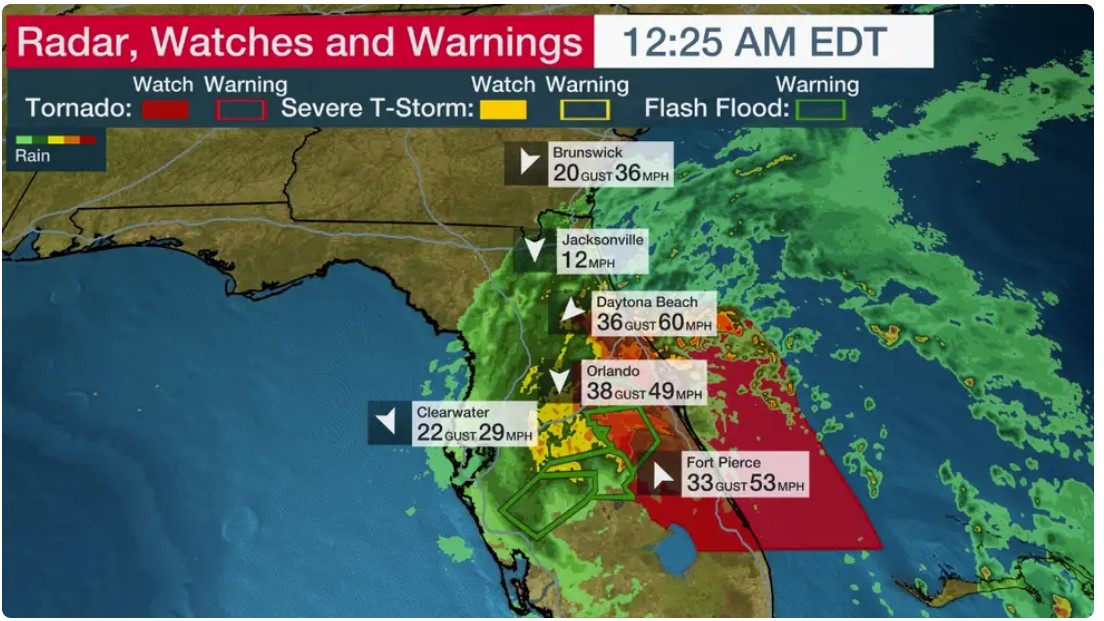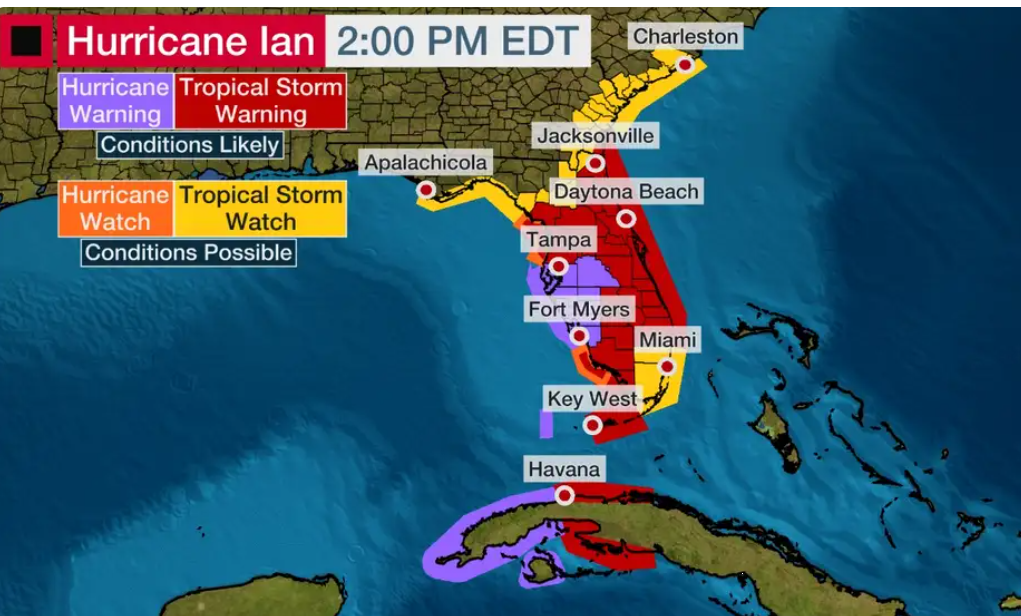
[This is a slightly different version of a story we prepared for NBC News]
Cathy Balestriere was expecting “especially low” bookings last month at Crane’s Beach House, the boutique hotel she manages in Delray Beach, Florida. Instead, they jumped 12% from the year before.
“It feels like a miracle based on where we were sitting just a few weeks ago,” she said.
It’s not a miracle. It’s the weather.
The surge coincided with a sweltering mid-June heat wave across the Midwest and the Northeast, putting over 80 million people under heat alerts — the latest run of unseasonably extreme temperatures fueled by a global climate that is warming at a record pace.
Florida might not be the first destination that comes to mind for people looking to beat the heat, but it’s where some headed after their hometowns became just as sweltering.
This time of year, most guests at Crane’s are in-state or regional travelers, Balestriere said. But many of the last-minute bookings came from New York, New Jersey, Pennsylvania and Texas. Delray Beach has been hot, too, but visitors to the hotel “can at least enjoy the ocean breeze and access to the beach and refreshing pools,” she said.
It’s a similar story at the Lake Nona Wave Hotel in Orlando, where reservations soared 45% in the past three weeks compared with the year before, largely from the Northeast and Texas.
“We have had a couple of guests mention while they are checking in that the heat at home is unbearable,” sales and marketing director James Tattersall said.
“Snowbirds” typically head south to Florida and other balmier states in the winter and spring, creating a high season there when it’s frigid up north. But Crane’s Beach House now sees a growing opportunity in warmer months. It has already shifted its seasonal editorial calendar, Google ad strategy and newsletter messaging to capture more of the off-season demand, Balestriere said.
It’s part of a broader change that has been underway for years as tourist hot spots adapt to shifting demand tied to evolving seasonal weather.
While not every place is feeling an impact in the same way, or at all, “there is no question that we are seeing a growing preference for destinations with more comfortable summer temperatures alongside rising global temperatures,” said Jesse Neugarten, founder and CEO of Dollar Flight Club, a travel deal alert service.
From May to June, the platform had a 31% surge in flight bookings and interest from Northern cities like New York and Boston to destinations in Florida, he said, “where travelers are looking for relief from heat waves.”
Scorching weather at home is also pushing people toward cooler climes abroad. While hotel bookings in Italy — a longtime summer hot spot — are up a modest 3% since last year, “it’s Scandinavia that is having a moment,” researchers at the Virtuoso luxury travel network said in a recent report.
Bookings in the region have surged 25% since last year, with even steeper 49% and 47% increases in Iceland and Sweden, respectively. Even the Netherlands, where authorities have tried to reduce tourist volumes, is seeing 33% higher hotel demand this season, Virtuoso found.
Some parts of the continent are getting so hot during the summer that the typical high season is getting longer, said Rebecca Masri, founder and CEO of Little Emperors, a private members luxury hotel club.
“With the weather in southern Europe staying warm, booking trends are shifting to September, October and even November,” she said, as some hotels and resorts that usually close at the end of the summer extend their operations. “These months are becoming the new peak season.”
Consumers will increasingly see those shifts reflected in pricing, said Chris Lafakis, a director at Moody’s Analytics.
“You won’t have to be rich to vacation, but it’s going to be more expensive to travel to the more favorable destinations,” he said. “Those with the means to do so will be able to, and those that don’t will unfortunately not have as many options to fall back on.”
As airlines have added capacity, domestic and international airfares have fallen by double-digit percentages this July Fourth holiday week compared with last year’s, according to booking platform Hopper, despite record expected travel volumes. But while average hotel room rates in some cooler northern European countries have stabilized since last year’s surge, they’re climbing in popular areas — up 18% in Iceland and 47% in Norway, Virtuoso said.
Weather-driven shifts in travel patterns will create economic winners and losers, Lafakis said. “Probably 20% to 30% of the overall damage to the economy from the heat is because of less travel tourism,” he said. As seasonal temperatures soar, would-be visitors “may go somewhere else or choose not to go at all.”
Some industry experts aren’t so worried.
During hot weather, “travelers will usually change their behavior rather than cancel a trip,” said Tiffany Townsend, a spokesperson for New York City Tourism and Conventions. “They might visit more museums and indoor attractions or do more shopping” while it’s scorching outside and schedule outdoor activities early or late in the day.
Heather Dickie, 69, a Texas-based marketing consultant, said her travel itinerary is still in flux, but she said she needs a break from the heat. “If I can get out of Dallas,” where temperatures have already hit triple digits, “Alaska is sounding good,” she said.
But she’s more likely to head about 650 miles “up the road a bit” toward Taos, New Mexico, for the relative reprieve of highs in the mid-80s. “I have friends in that area,” she said, “and am looking at late July or August for a nice, cool getaway.”




